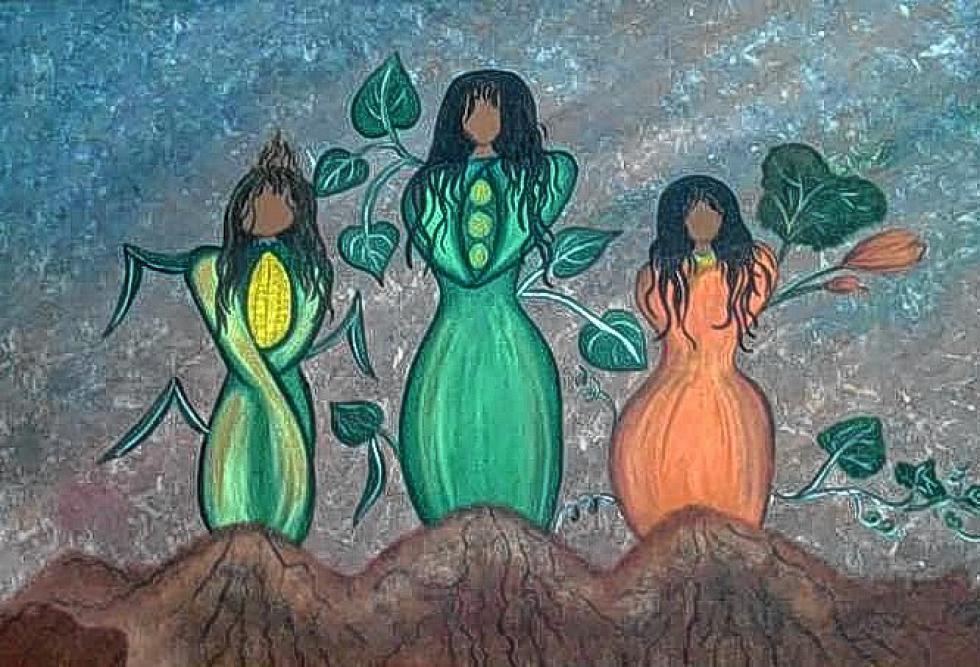
A legend tells of Indigenous people who were suffering from hunger during an exceptionally long winter. One snowy night, three beautiful women came to visit. One was tall, dressed in yellow with long flowing hair, another wore green, and the third wore an orange robe. They sought shelter from the cold and were invited to sit by the fire.
There wasn’t much food, but the family shared what they had with the mysterious visitors. In gratitude for their generosity, the three sisters revealed their true identities as corn, beans, and squash, then gave themselves to the people so they’d never go hungry again.
The true beauty of the story is that the Three Sisters represent far more than three random food crops. They comprise a synergistic garden trio that epitomizes companion planting. Like the legend, this genius method originated with Indigenous people, whose closeness to nature inspired this amazing botanical analogy of reciprocity and cooperation.
“The organic symmetry of forms belongs together; the placement of every leaf, the harmony of shapes speak their message. Respect one another, support one another, bring your gift to the world and receive the gifts of others, and there will be enough for all.”
Robin Wall Kimmerer in Braiding Sweetgrass
If you’re unfamiliar with gardening, here’s how it works: The corn provides a trellis for the beans to climb while the squash’s huge leaves provide shade that discourages weeds and helps retain moisture in the ground. Furthermore, beans host nitrogen fixing bacteria, which benefits the corn, while the squash’s prickly leaves discourage caterpillars and some insects.
And it gets even better. The trio is nutritionally sound. Corn and beans combine to form a complete protein while squash provides additional vitamins in its carotene-rich flesh. Utilizing mostly vertical space, even a small garden can yield not only a generous harvest, but a reasonably balanced diet as well.
Some add sunflowers , expanding this harmonious group to a quartet. You can find detailed instructions on how to plant the Three Sisters here. The site includes various patterns developed by Indigenous tribes in different geographical areas. Some include sunflowers for yet another dimension of function and beauty. Note you do not plant them all at once, but give the corn a chance to get established, i.e., about four inches tall, before planting the beans to assure it has the strength to support the vines.
Depending on how long the growing season is in your area, it is a bit late to get started, but could be worth a try. With a potential food shortage looming due to the price of fuel, if nothing else use this Native American wisdom to stock up on dried beans, canned corn, and winter squash at the grocery store, even if you can’t grow your own. The trio produces an appealing culinary chorus as well.
Bon appetite!


I tried to login but couldn’t, so here’s what I was going to post: Thank you for this insightful information. I enjoyed reading about the three sisters and learning the benefits of planting these things together.
Onward & Upward! Dawn Greenfield Ireland
Travel for free: read a book!
I do it all. I can fix yours. I win awards.
dawn@dawngreenfieldireland.com
C: 713-256-5412 My WebsiteIMDBCoverflyAmazon Facebook Twitter Instagram
LikeLiked by 1 person
Thanks for stopping by, Dawn!
LikeLiked by 1 person
I hadn’t heard of the three sisters, Marcha, but I’ll not forget this story. Beautiful — and useful. Thank you! 😊
LikeLiked by 1 person
Thanks, Gwen! It’s such a great idea I’m determined to try it.
LikeLiked by 1 person
Thank you! ILOVE what you’re doing…
Love,
Ena
LikeLiked by 1 person
Thanks, Ena! I love what I’m doing, too. 🙂
LikeLiked by 1 person